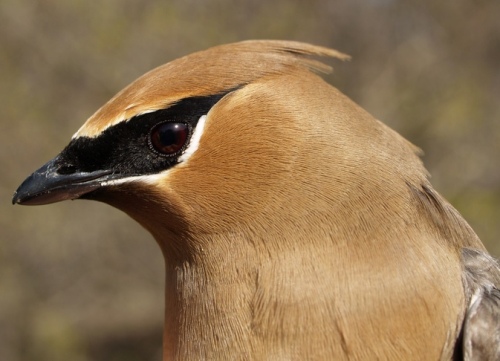|
McGILL BIRD OBSERVATORY |
|||||||||||||||||||||||||||||||||||||||||||||||||||||||||||||||||||||
Welcome
to the McGill Bird Observatory weekly report.
Click here for a complete listing of our archives.
Banders-in-charge: Simon Duval, Gay Gruner Notes: We'll start with the most exciting news of the week - after much speculation, the 200th species observed at MBO turned out to be Great Egret, a lone individual that flew gracefully into the shallow water north of C nets on Thursday, April 22.
Although activity at the nets was slow this week (typical for the first week of spring banding), we added 16 new species to the 2010 spring list this week. Highlights include Pied-billed Grebe, American Bittern, Osprey, Virginia Rail, Belted Kingfisher, Cliff and Barn Swallow, Brown Thrasher and Chipping Sparrow. There was a consistent movement of Broad-winged Hawks throughout the week. Our first week of daily banding went off without a hitch, thanks to a great group of volunteers. We appreciate everyone’s efforts to get to MBO for the early start time and your hard work and keen observations for the following six hours. One of our volunteers has an app on his iTouch that calculates a day’s work. Here is what a typical day at the MBO equates to: 11 381 steps, 612 calories and 8.67 km (census not included). Of course that doesn’t quantify the opportunity to observe and learn about birds as well as enjoy time with fellow nature enthusiasts! This week’s top ten is very similar to last week’s, with just three new birds making the list: Red-winged Blackbird, American Crow and Fox Sparrow. Six of the top ten observed also ranked in the top ten birds banded: Cedar Waxwing, Fox Sparrow, Song Sparrow, Red-winged Blackbird, Tree Swallow and Black-capped Chickadee. Most of these are regulars at this time of year, but Fox Sparrow was unusually abundant, with more banded in this one week than in four of five previous entire spring seasons.
Now for a little quiz - what do the following birds photographed at MBO this week have in common?
Quiz answer - they are all potential breeders at MBO. MBO is participating in the second Quebec Breeding Bird Atlas, which started in January 2010. Our square, 18WR83, includes the Morgan Arboretum and parts of Ste-Geneviève, Île-Bizard, Lac des Deux Montagnes, Kirkland and Beaconsfield – a very diverse territory. We will gather evidence and conduct point counts outside of the MBO site, but in this update we focus on MBO. In addition to our regular observations we collect breeding evidence for as many species as possible. We already have some Confirmed breeders (American Crow, Tree Swallow, etc) and many Probable breeders, such as the birds in the photographs, which we anticipate confirming this spring and summer. It is not unexpected that these species are probable breeders, although Turkey Vulture may make you blink. We’ve regularly been observing a pair of Turkey Vultures on the north sector of the census trail; the level of evidence is code T (Probable). After selecting a nest site, a pair of Turkey Vultures will roost nearby; sometimes for several days before egg laying begins. TUVUs have quite a range of nesting habitat - cliffs or in the underbrush of deciduous and mixed forests, in a hollow tree or stump and occasionally abandoned buildings, all of which are available on MBO grounds or nearby. Needless to say we are keeping our eyes and ears open (for the grunts of courting adults or hungry young) for further evidence.
|










